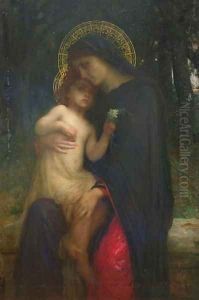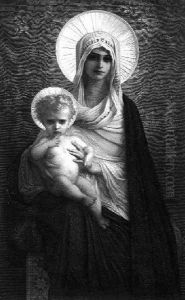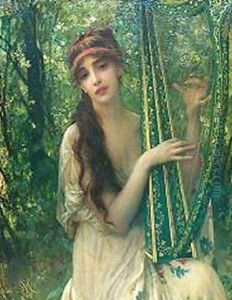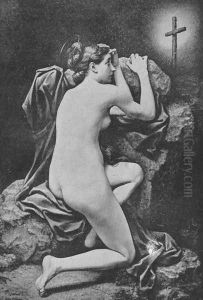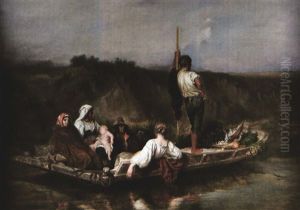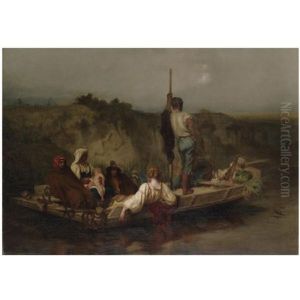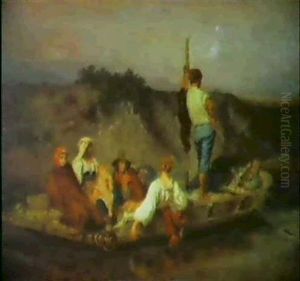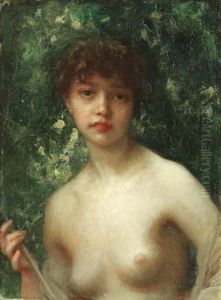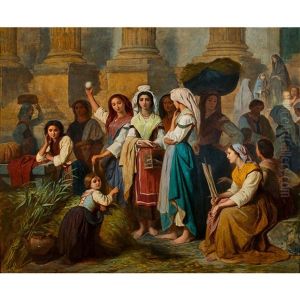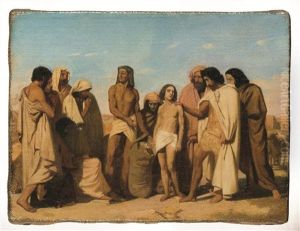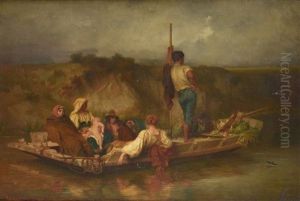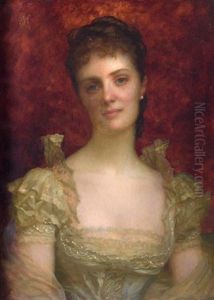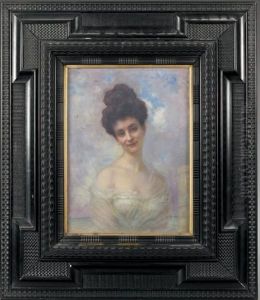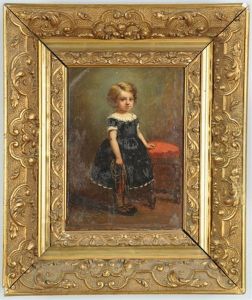Antoine Auguste Ernest Hebert Paintings
Antoine Auguste Ernest Hebert was a French painter of historical and genre scenes, known for his academic style and his depictions of Italian peasant life. Born on November 3, 1817, in Grenoble, France, he was raised in a well-to-do family which allowed him to pursue his interest in the arts from a young age. Hebert studied at the École des Beaux-Arts in Paris, where he was a pupil of Paul Delaroche, a prominent painter of the time. Hebert's early work was influenced by the Romantic movement, but he gradually shifted towards a more realistic approach.
Hebert traveled extensively in Italy, where he became enchanted by the landscape and the people, often reflecting this fascination in his work. In 1847, he received the Prix de Rome for his painting 'La Jeune fille de Megara' (The Young Girl of Megara), which enabled him to study in Rome at the Villa Medici. His time in Italy proved to be a significant influence on his artistic development, and he often returned there throughout his life.
During his career, Hebert achieved considerable success and was commissioned to paint various works for churches and public buildings in France. His religious paintings, such as 'La Malaria' and 'The Virgin of the Deliverance', are particularly notable for their combination of spiritual intensity and realistic detail. He also served as the director of the French Academy in Rome from 1867 to 1873 and again from 1874 to 1879. In addition to his paintings, Hebert was known for his work as an illustrator, contributing to several literary works of the time.
Hebert was recognized by the French government for his contributions to art and was made a Commander of the Legion of Honor. Towards the end of his life, he settled in La Tronche, near his birthplace, where he continued to paint until his death on December 5, 1908. His work remains on display in galleries and museums across France, including the Musée Hébert in Paris and La Tronche, which are dedicated to his life and art.







